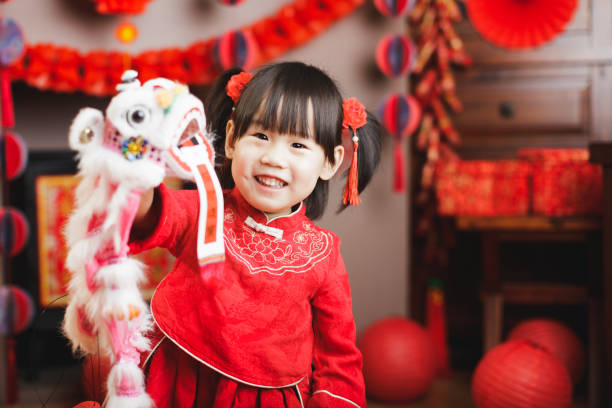The celebration of the Lunar New Year, which is also known as the Chinese New Year, is an extraordinary and culturally rich event that lasts for several weeks. This joyous season, which coincides with the start of the lunar calendar, is celebrated to a large extent across Asia and by numerous Asian populations located in other parts of the world. Not only is this a time when people get together to celebrate and have a good time, but it’s also a time when there is significant cultural meaning behind all of these activities.
Table of Contents
What exactly does “Lunar New Year” mean?
The Chinese New Year, also known as the Lunar New Year, is the most important traditional celebration in the Chinese calendar. It is also generally referred to as the Chinese New Year. Depending on the lunar calendar, it might take place anywhere between the 21st of January and the 20th of February. This long-standing holiday has its origins firmly planted in cultural and mythical customs. It is a time to pay respect to deities, ancestors, and the connections that bind families together.
The cycle of the Zodiac
The Chinese Zodiac is one of the most fascinating features of the Lunar New Year. It is comprised of twelve animal signs, each of which is related to a certain year in the Chinese calendar. The animals that represent the zodiac cycle around once every 12 years, and the year 2023 will be known as the Year of the Rabbit. Those who were lucky enough to be born in the Year of the Rabbit are said to be gentle, kind, and kind.
The Festival of the Spring
The beginning of the lunar calendar year is often referred to as the Spring Festival. It’s that time of year when winter is finally drawing to a close and there’s the hope that spring is just around the corner. The importance of this is not just tied to the climatic conditions; rather, it is a metaphor for fresh starts and the expectation of better times ahead.
The preparations consist of a period of time spent cleaning and decorating.
The weeks leading up to the Lunar New Year are a busy time for families as they clean their homes thoroughly. This ritual, sometimes known as “spring cleaning,” is meant to remove unfavourable omens and make room for favourable ones in preparation for the coming year. Traditional decorations like as crimson lanterns, couplets with auspicious slogans, and paper-cut window art are placed inside and outside of homes because it is thought that these things would fend off evil spirits.
A Delight for the Senses: The Annual Reunion Dinner

The centrepiece of the celebrations for the Lunar New Year is the get-together supper that is held on New Year’s Eve. The whole family gets together for a scrumptious feast, and each dish has its own meaningful history behind it. For example, dumplings have the form of old Chinese currency and serve as a representation of affluence.
The Colour Red Is Considered to Be a Symbol of Good Fortune
During the Lunar New Year, the colour red is used extensively. It is meant to bring joy and success to those who wear it. As a symbol of their best wishes and blessings, people give one another hongbao, which are red envelopes filled with money. These are especially common in the culture of children and those who have never been married.
The History of Nian’s Legend
There is a strong connection between the beginnings of the Lunar New Year and the story of Nian, a vicious legendary beast. Legend has it that Nian would terrorise communities, but the locals eventually figured out that the beast shied away from loud sounds, bright lights, and the colour red. This is the reason why pyrotechnics, firecrackers, and the colour red play such a significant role in the celebration.
Festivals with Processions and Dragon Dances
Parades celebrating the Lunar New Year are a sensory spectacle. The thunderous pounding of drums and the crackling sound of firecrackers accompany the dazzling performances of dragon and lion dances that wound their way through the streets of the city. It is thought that watching one of these mesmerising performances can bring good fortune and drive away evil spirits.
A Time Honoured Tradition with a Modern Twist New Year’s Resolutions
Although people all across the world make resolutions for the new year, in the setting of the Lunar New Year, such resolutions take on a more significant meaning. It is the perfect moment to reflect on the last year and visualise what you want your future to look like, particularly in terms of financial success, personal fulfilment, and overall health. The focus is on one’s own personal development and the implementation of constructive changes.
Paying a Call on Various Temples and Ancestral Shrines
The Lunar New Year is a time when many people pay their homage to the gods and ancestors who came before them by going to ancestral shrines and temples. During these trips, offerings are given, incense is lit, and prayers are recited in hopes of receiving benefits for the next year.
A spectacular conclusion to the Lantern Festival
The celebrations for the Lunar New Year come to a close with the annual Lantern Festival. It is observed on the 15th day of the first lunar month and is commemorated with the exhibition of beautiful lanterns, the writing of riddles on paper lanterns, and the eating of delicious rice dumplings.
The final word
The celebration of the New Year of the Lunar Calendar is more than simply a party; it is a rich tapestry of customs, symbols, and community. Now is the time to reflect on the years gone by, revel in the here and now, and plan for the years to come. Let us embrace the rich cultural legacy and the sense of unity that this magnificent festival provides as we say goodbye to the previous year and welcome in the Year of the Rabbit. As we do so, we will be saying hello to the Year of the Rabbit.
FAQs regarding the Chinese New Year
- What role does the Chinese Zodiac play in the celebrations that take place during the Lunar New Year?
The Chinese Zodiac is a cycle of animal signs that lasts for twelve years; each year in the cycle corresponds to a different animal. The fact that each animal has its own set of traits and symbols, which in turn influence people’s beliefs and behaviours during the year of their birth, plays a crucial part in the celebrations that take place during the Lunar New Year.
- During the Lunar New Year, why is the colour red given such significance?
There is a widespread cultural belief that the colour red brings both happiness and good fortune. It plays a significant role in the production of Lunar New Year decorations, as well as apparel and red envelopes. It is believed that the colour red will fight off evil spirits and also represents wealth and joy.
- What kinds of things do individuals do to be ready for the Lunar New Year?
In order to get rid of any bad luck and get ready for the Lunar New Year, people clean their houses thoroughly and decorate them with traditional objects such as crimson lanterns, couplets, and paper-cut art. During the family reunion meal, another custom that is observed is the preparation and distribution of unique delicacies by family members.
- During the Lunar New Year, what are some popular traditional meals that are served?
During the Lunar New Year, common traditional delicacies include dumplings, which signify prosperity; fish, which represents surplus and riches; and nian gao, a sticky rice cake symbolising a greater income and status in the next year.
- How does the Lantern Festival bring an end to the celebrations for the Lunar New Year?
The culmination of the celebrations for the Lunar New Year is the event known as the Festival of the Lanterns, which takes place on the 15th day of the first lunar month. Participants in the celebration engage in activities such as deciphering riddles, seeing and exhibiting lanterns, and eating sweet rice dumplings.
As a conclusion, the Lunar New Year is a time that is filled with a wealth of cultural customs, symbolism, and optimism for the future. People are able to come in touch with their heritage and get excited about the opportunities that lay ahead in the new year since it is a festival that brings families and communities together. Therefore, whether you are taking part in the celebrations or merely looking on from a distance, may the Year of the Rabbit bring you wealth, happiness, and prosperity in whatever capacity you choose to celebrate it. Best wishes for the New Lunar Year!






